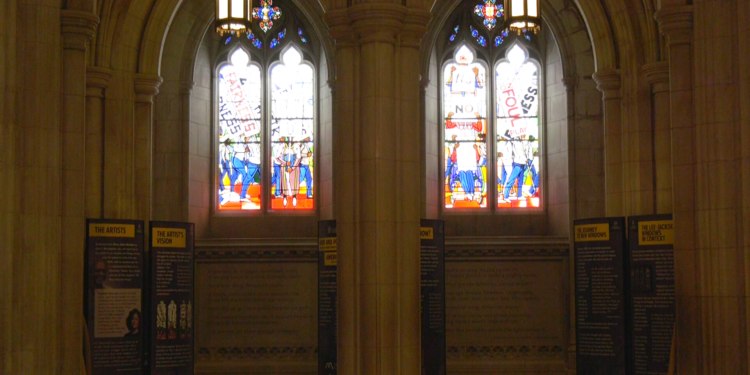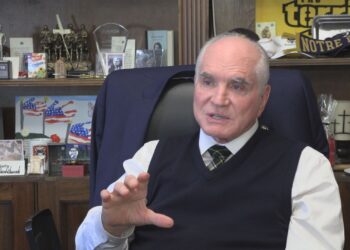By Brendan Scanland
WASHINGTON, D.C. — Remembering the life and legacy of Dr. Martin Luther King, Jr., goes hand-in-hand with remembering and recognizing the civil rights movement.
A recently installed exhibit at the National Cathedral in Washington, D.C. is literally shedding light on the history of the civil rights movement and the fight for racial justice.
Inside this well-renowned place of worship, thousands of pieces of dark colored stained glass tell a story and provide an ambience unlike any other.
“It was sort of the style of the time,” said Kevin Eckstrom, spokesman for the National Cathedral.
But some windows stand out more than the others.
“These ones are definitely different, and they stand out. And what’s interesting is if you’re walking down, you can just see this sort of glow, emanating from this bay. So they kind of call attention,” said Eckstrom.
The Now and Forever Windows were designed by acclaimed artist Kerry James Marshall and dedicated in September 2023. They replaced a pair of twin windows that honored confederate generals Robert E. Lee and Thomas “Stonewall” Jackson, which were installed in 1953.
“The cathedral needed money to build the building and the Daughters of the Confederacy needed a place to memorialize their story,” said Eckstrom. “The windows that were here prior told a very specific story about a very specific moment with very specific men in American history. It was pretty exclusionary, actually,” he added.
Eckstrom says the Now and Forever windows symbolize the ongoing work toward racial justice and tell a more inclusive history of the United States.
“What we wanted to replace these with was a new story, a story that hadn’t been told here before. A story that was more inclusive and had a broader lens of American history,” said Eckstrom.
A story that delivers A similar message to the words of the late Dr. Martin Luther King Jr. But a similar message is not the only connection between this stained glass and Dr. King. These windows shine into the very pews where hundreds gathered on March 31, 1968, to hear what would be King’s final Sunday sermon.
“Here, in that pulpit right over there, and we hold that legacy very close,” said Eckstrom.
Like Dr. King, the Now and Forever Windows also leave a legacy. Each individual piece of glass and every last detail, living up to its intended purpose: using a bright glow to call attention and start a conversation.
“These windows are a very permanent reminder that the work is never actually done. It’s always ongoing, everybody has a role,” said Eckstrom.


















